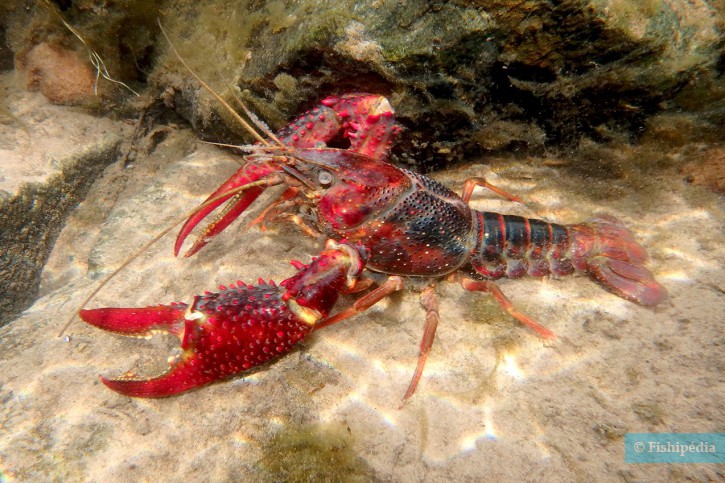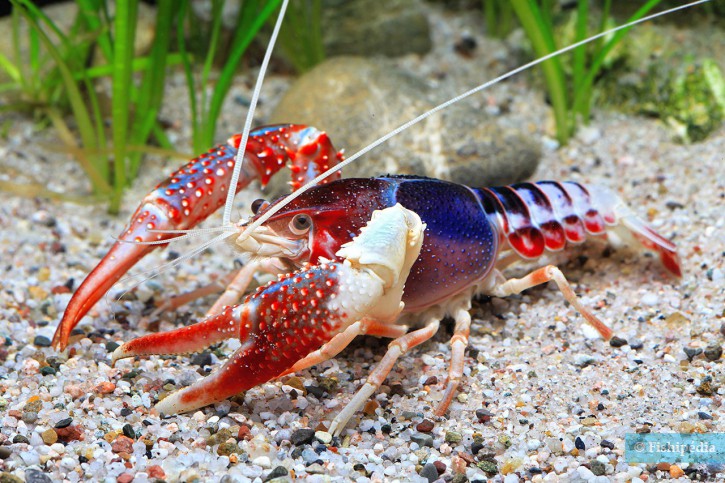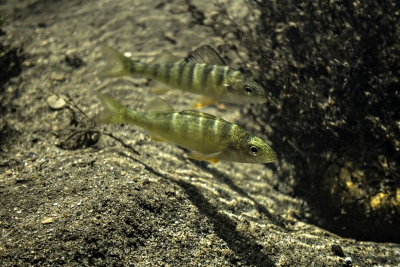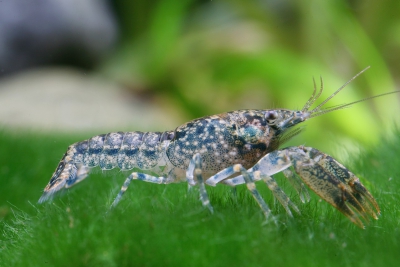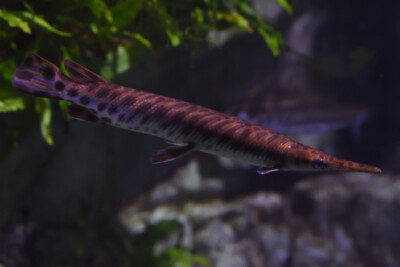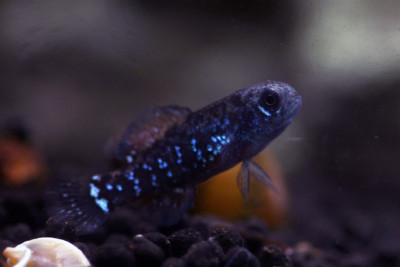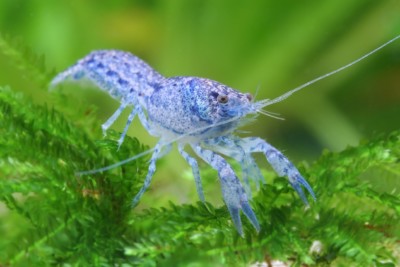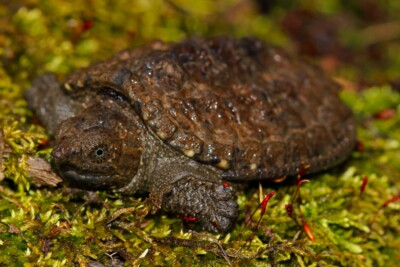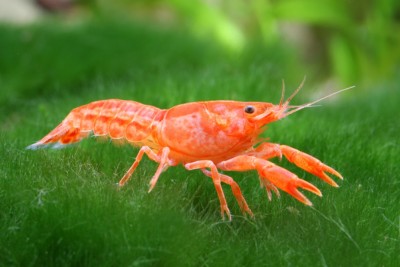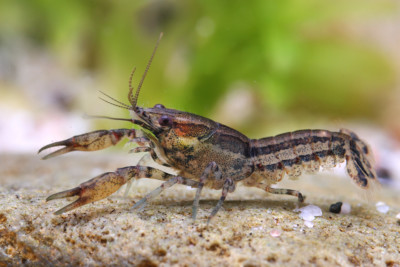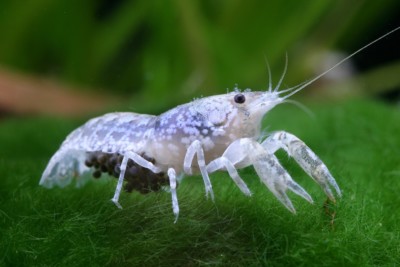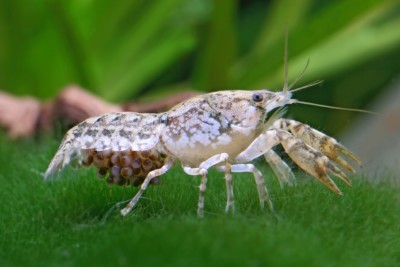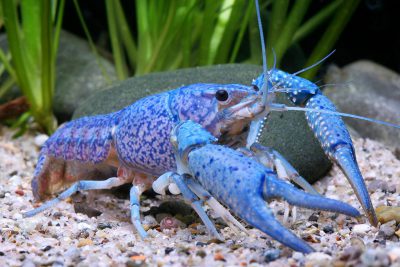red swamp crayfish
| Scientific name | Procambarus clarkii |
|---|---|
| Descriptor | Girard |
| Year of description | 1852 |
| IUCN category (World) | LC |
| Family | Cambaridae |
| Genus | Procambarus |


Introduction
Procambarus clarkii, commonly known as red swamp crayfish, is a fresh water and brackish water crustacea from the North America.
This sheet is currently being prepared. The texts currently proposed come from our data model or are being drafted. To request priority for this content, you can write to us HERE.
Who is it?
Morphology
-
Average size10 cm
-
Maximum size12 cm
-
Longevity6 year
-
Average size10 cm
-
Maximum size12 cm
-
Longevity6 year
How to recognize this crustacea ?
The red swamp crayfish measures between 10 and 12 cm. this crustacea is unicolore with a predominantly rouge body.
The crayfish has claws on the first three pairs of legs. The first pair always has the largest claws, with the second and third pairs usually consisting of simpler claws. The other pairs of legs end in a spine.
Behaviour & Life cycle
-
Sociabilitysolitary
-
territorialYes
-
VenomousNo
-
Way of livingdiurnal
Like all crustaceans, The red swamp crayfish molts whenever it becomes cramped in its shell. Before the hardening of its new body, it is more vulnerable and spends a good part of its time hidden. This mechanism, very complex, allows the periodic renewal of the exoskeleton and part of the internal skeleton. It is also during the moult that the females become fertile.
The red swamp crayfish is a crustacea solitary naturally found on the bottom. This species is omnivorous .
The red swamp crayfish is a territorial animal that does not tolerate any incursions into its living area. It is particularly virulent against other territorial species and it can provoke heated fights. Relationships between conspecifics are also hectic, with each seeking to secure its place.
Reproduction
-
Reproductionovipare
The red swamp crayfish is a crustacea ovipare. this crustacea protects its eggs from nearby predators. Like crabs, females incubate numerous eggs under their abdomen.
Harmless species
This species does not represent any particular threats to humans when encountered in its natural environment.
Origin and distribution
What is its habitat?
Natural environment characteristics
-
Temperature-4 - 30 °C
-
pH (acidity)7 - 8
-
FlowSlow
Biotope presentation
The red swamp crayfish is most often found at a depth between 0m and 5m. However, it is not impossible to find this species at other depths. This animal evolves in areas characterized by a strong presence of vegetation (aquatic and marsh plants, decaying organic matter, roots...).
This species lives near large roots, in which it can find refuge in case of danger. This type of habitat is often found not far from the banks.
Species of the same biotope
To go further
Sources & Contributions
Participation & Validation
The Fishipedia team and specialist contributors are committed to providing high-quality content. However, although the information comes from scientific sources or testimonials from specialists, the cards may contain inaccuracies.

Adrien Falzon
Translation
Translation done with the valuable contribution of our translators, who make this information available to a wider audience. We sincerely thank them for their commitment.
Bibliographic references
The Effect of Temperature on Feed Consumption and Nutrient Absorption in Procambarus clarkii and Procambarus zonangulus - Suzanne L. Croll - Stephen A. Watts - WILEY - 2007.
Optimizing reproductive performance and embryonic development of red swamp crayfish Procambarus clarkii by manipulating water temperature - Shiyu Jin - Tanglin Zhang - Elsevier Ltd - 2019.
Scientific partners
Tags
Species of the same family
Same genus
Species of the same biotope




